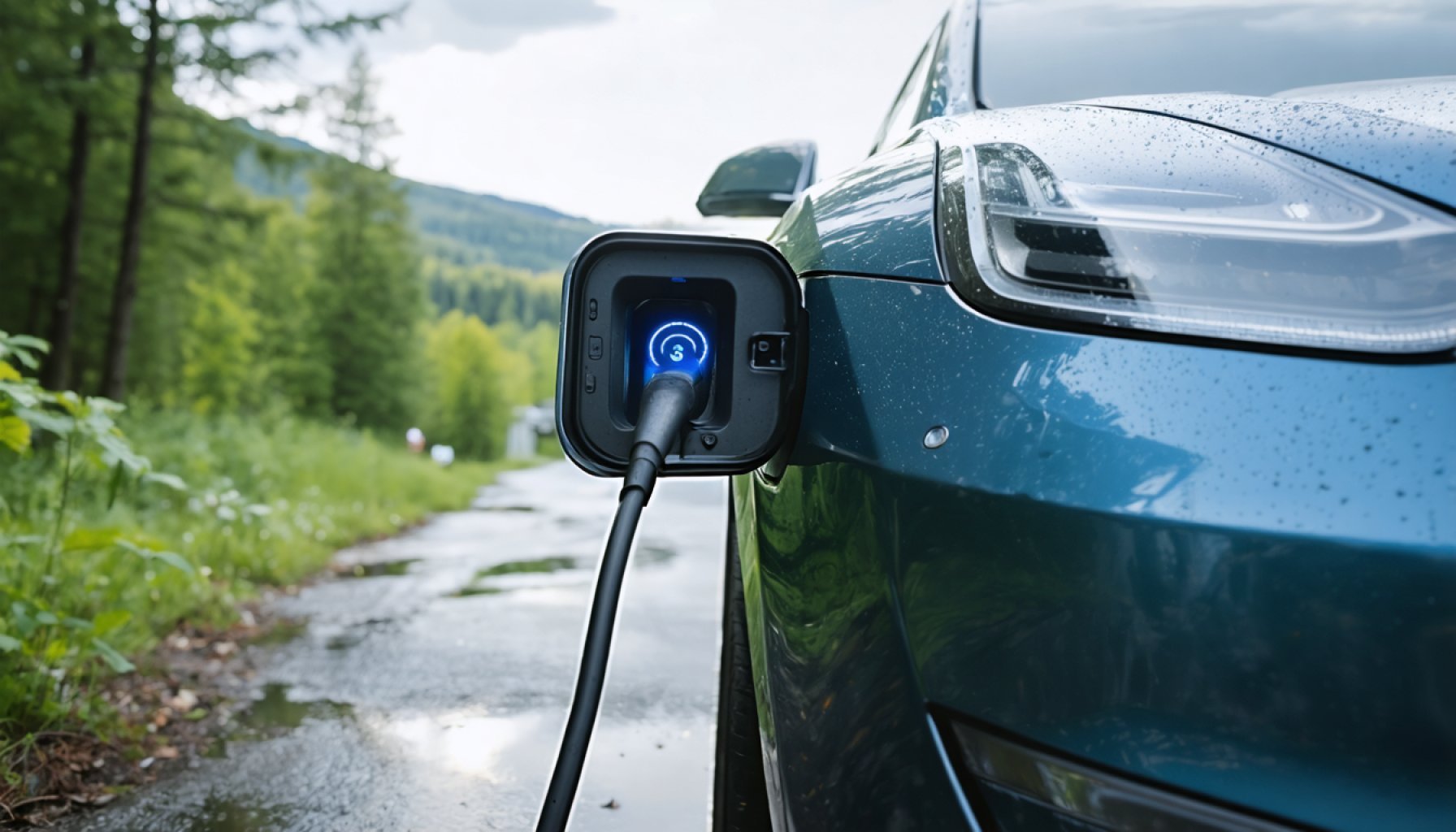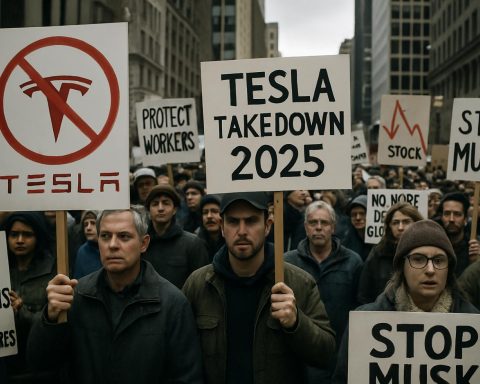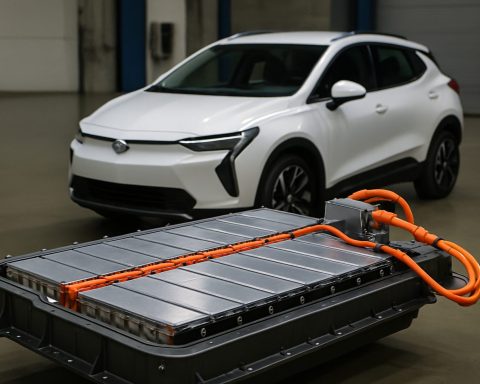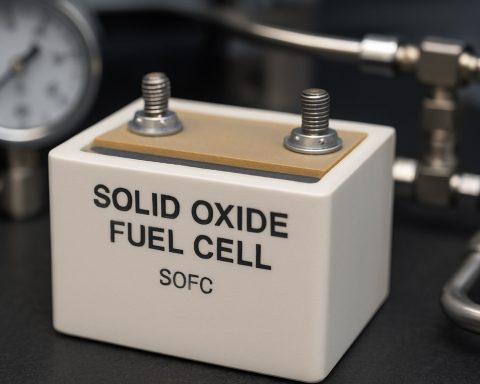- Electric vehicles (EVs) in Vermont have surged by 41% in the past year, totaling nearly 18,000 EVs.
- A significant 12% of new car registrations in Vermont are EVs, reflecting a strong trend towards sustainability.
- The state supports EV adoption with 459 public charging stations, including 92 DC Fast Chargers.
- Diverse EV models, including the Hyundai Ioniq 5, Nissan Ariya, and Tesla Model Y, meet varied consumer needs.
- Incentive programs and resources like Drive Electric Vermont’s website assist consumers in transitioning to EVs.
- Vermont’s public and private sectors are collaborating to enhance the electric vehicle ecosystem and reduce emissions.
- The state aims to lead in environmental sustainability and offers a comprehensive online platform, DriveElectricVT.com, for EV information.
The ethereal beauty of Vermont’s landscapes now intertwines with the hum of electric engines as the state witnesses an electrifying transformation. The latest data reveal nearly 18,000 electric vehicles (EVs) zipping across the Green Mountain State, marking a staggering 41% increase from the previous year. This isn’t just a simple shift in gears—it’s a powerful journey towards sustainability.
As snow drifts linger on mountaintops and maple trees stretch towards the sky, Vermonters are embracing this new age of transportation. Behind this movement is a critical alignment with environmental stewardship, made all the more poignant by the coming Earth Day celebrations. This leap forward positions Vermont as a national leader in reducing transportation-related greenhouse gas emissions.
The dynamics of the road are changing rapidly. An impressive 12% of all new cars registered in the state last year require a plug, glowing with their electric promise. Among them, a mix of all-electric vehicles (AEVs) and plug-in hybrid electric vehicles (PHEVs) continues to expand. These machines, some powered solely by electric batteries and others offering flexibility with a conventional engine, offer a tapestry of options for diverse lifestyles.
Streets and highways are punctuated by strategically placed EV chargers. Vermont boasts 459 public charging stations, with 92 of those being DC Fast Chargers, which can breathe new life into a drained battery in as little as twenty minutes. This infrastructure underscores the state’s commitment to supporting this electric surge.
The automotive landscape is also evolving with variety. From sleek sedans to robust electric trucks and SUVs designed to handle Vermont’s rugged, snow-laden roads, options abound—the Hyundai Ioniq 5, Nissan Ariya, Toyota RAV4 Prime, Tesla Model Y, and Ford F-150 Lightning are leading favorites. And for those budget-conscious buyers, the growing market of pre-owned EVs provides a gateway to emission-free driving without breaking the bank.
Vermont’s public and private sectors rally in concert—Nucar Automall in St. Albans stands as a beacon of innovation, installing over a dozen EV chargers and playing into the state’s strategic planting of fast-charging stations. Such initiatives, backed by Efficiency Vermont’s EV incentive programs, are vital supports for a flourishing EV ecosystem.
Digital resources are also keeping pace with this evolution. Drive Electric Vermont’s refreshed website now serves as an electrifying hub of information. With user-friendly interfaces and mobile access, information on incentives, new models, and charging tips is at one’s fingertips, empowering more Vermonters to make informed decisions.
While the hum of engines might be fainter, Vermont’s message resonates loudly: the path to a cleaner, more sustainable future is here, emboldened by the quiet revolution of electric vehicles. As Vermont paves this new road, it invites all to join in the journey towards a greener tomorrow.
For those eager to explore this electrifying frontier, dive into a wealth of resources and savings at DriveElectricVT.com. Vermont’s open invitation to cleaner transit is now just a click away.
Why Electric Vehicles are Charging Vermont’s Green Transformation
Vermont’s green landscapes are now home to a growing fleet of electric vehicles (EVs), marking a critical step in the state’s journey towards sustainability. With nearly 18,000 EVs on the road—a 41% increase from the previous year—Vermont is not just embracing new technology but is also making significant strides in environmental stewardship. As more Vermonters choose electric over gasoline, the state emerges as a leader in reducing transportation-related greenhouse gas emissions.
Insights and Predictions
1. Continued Growth in EV Adoption: Vermont has seen a dramatic rise in EV registrations, with 12% of all new cars needing a plug last year. This trend is expected to continue as both awareness and infrastructure improve.
2. Infrastructure Expansion: With 459 public charging stations, including 92 DC Fast Chargers, Vermont is expanding its EV infrastructure. Such support systems are crucial for the widespread adoption of electric cars, mitigating range anxiety among drivers.
3. Diversity in Vehicle Types: The availability of various EV models, from sedans to electric trucks, allows Vermonters to choose vehicles that best fit their needs, whether for commuting or navigating snowy terrains.
Pressing Questions Addressed
– How can I benefit from Vermont’s EV incentive programs?
Incentives from Efficiency Vermont and federal tax credits can significantly reduce the cost of purchasing an EV. It’s crucial to research and apply for these programs early.
– What are the best EV models for Vermont’s terrain?
Vehicles like the Hyundai Ioniq 5, Nissan Ariya, Toyota RAV4 Prime, Tesla Model Y, and Ford F-150 Lightning are well-suited for rugged and snowy Vermont roads.
– Where can I find more information on EVs in Vermont?
Drive Electric Vermont offers comprehensive resources on incentives, charging stations, and model comparisons.
Real-World Use Cases
– Commuting in Rural Areas: Residents in rural Vermont benefit from EVs with longer ranges and the expanding network of fast chargers, ensuring that even longer commutes are feasible without emissions.
– Emergency Preparedness: In areas prone to power outages, plug-in hybrid electric vehicles (PHEVs) can offer flexibility with dual fuel systems, ensuring that transportation isn’t entirely dependent on electricity.
Feature Comparison and Market Insights
– Price Range: While upfront costs can be higher for EVs, long-term savings through lower maintenance and fuel costs, coupled with incentives, often balance out the initial investment.
– Battery Life and Sustainability: EV batteries typically last between 8-15 years. With advancements in battery technology, sustainability and performance are continuously improving.
Actionable Recommendations
– Explore Incentives: Investigate and apply for state and federal incentives, which can make an EV purchase more affordable.
– Plan Your Charging: Familiarize yourself with local charging stations and plan regular routes to optimize charging times, minimizing disruption to daily commutes.
– Stay Updated: Subscribe to newsletters from EV resources like Drive Electric Vermont to receive the latest updates and information on new models and technology.
In conclusion, Vermont is not just adapting to electric vehicles—it’s leading by example. The state’s commitment to sustainability, backed by growing infrastructure and community support, sets the stage for a cleaner, greener future. Embrace the change, and explore how you can contribute to this electric movement.











